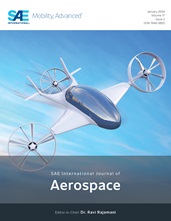A Parabolic Flight Study of the Mobile Information System
- Event
- Content
- Focus on sustained lunar operations and human exploration of Mars has become the National Aeronautical Space Administration 's (NASA) goal for the 21st century. NASA's objective is to provide crewmembers with a “hands-free” environment to promote more efficient operations in microgravity and reduced planetary gravity missions. A prototype integrated Mobile Information SysTem (MlST) was evaluated in a simulated microgravity environment while supporting the Langley Research Center (LaRC) Electron Beam Freeform Fabrication (EBF3) experiment. Two LaRC crewmembers wore the MIST during half of the parabolic flights as the experimental group. The other half of the parabolic flights served as a baseline group without the MIST being worn. Post-flight questionnaires, interviews, video/audio analysis, and field observations were used as evaluation measures. Results indicate mobility and compactness of a display are important in experimental procedures and other tasks. Using the MIST facilitated team communications and dynamics capturing more information about the experiment under these flight conditions.
- Pages
- 8
- Citation
- Litaker, H., Hoffman, R., and Whitmore, M., "A Parabolic Flight Study of the Mobile Information System," SAE Int. J. Aerosp. 1(1):347-354, 2009, https://doi.org/10.4271/2008-01-2105.
